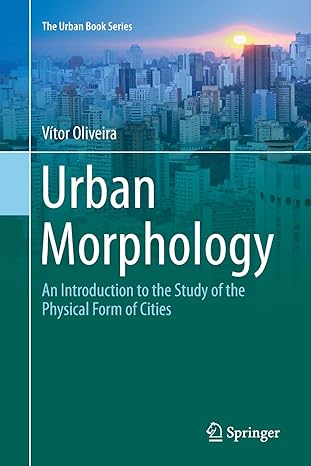Exercise 3.3The Greatest Grid Considering one of the fundamental messages of this book, the recovery of key
Question:
Exercise 3.3—The Greatest Grid Considering one of the fundamental messages of this book, the recovery of key elements of urban form, such as streets, street blocks, and plots, the 1811 plan for New York stands out as a singular document in planning history. ‘The Greatest Grid’
should be developed as homework exercise. The development of the exercise draws on two notable websites (open-accessmaterial): ‘The greatest grid’ (https://thegreate stgrid.mcny.org/), devoted to the 1811 plan; and ‘ZoLa—New York City’s Zoning &
Land Use Map’, dedicated to zoning regulations (https://zola.planning.nyc.gov/).
This exercise addresses the permanence of streets, street blocks (first group of students), and plots (second group of students) defined by the 1811 plan.
The first group of students should develop a comparison between the streets and street blocks proposed by the 1811 plan (https://thegreatestgrid.mcny.org/
greatest-grid/the-1811-plan) and those of today (included in ZoLa). The second group of students should focus not on the whole Manhattan, but on two small parts of the island, comparing the plan proposals and today’s plot structure: in Chelsea (https://thegreatestgrid.mcny.org/greatest-grid/selling-lots/89 and Fig. 5.4 in Chap. 5) and Union Square (https://thegreatestgrid.mcny.org/greatest-grid/squareparks-
and-new-avenues/229 and Fig. 3.4). In both comparative exercises, students are
Step by Step Answer:

Urban Morphology An Introduction To The Study Of The Physical Form Of Cities
ISBN: 287081
2nd Edition
Authors: Vitor Oliveira





